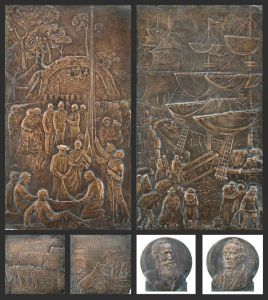William Robert Colton Paintings
William Robert Colton, born on February 10, 1867, in Paris, France, was a distinguished British sculptor who gained substantial recognition during his career. Colton's artistic journey began at an early age, and his talent soon became evident. He studied at the Royal Academy Schools in London, an institution known for nurturing the talents of many prominent artists. His education and skillful workmanship laid a strong foundation for his future success in the field of sculpture.
Colton's work was characterized by its classical style and often drew upon themes from mythology and literature. He excelled in creating memorials and portrait statues, which earned him commissions from various institutions and individuals. One of his most famous works is the memorial to Queen Victoria in Lahore, Pakistan. His ability to capture both the physical likeness and the spirit of his subjects was highly praised.
Apart from his practice in sculpture, Colton played a significant role in the art community. He was elected an Associate of the Royal Academy (A.R.A) in 1903 and became a full Academician (R.A.) in 1914. His contributions to the arts were further recognized when he was appointed a Commander of the Order of the British Empire (CBE) in 1918, an honor bestowed upon individuals for their impactful service to the arts and sciences.
Tragically, William Robert Colton's life and career were cut short when he passed away on November 13, 1921. Despite his relatively brief career, his work left a lasting impact on British sculpture. Colton's legacy is preserved in the many works he created, which continue to be admired for their craftsmanship and elegance.
